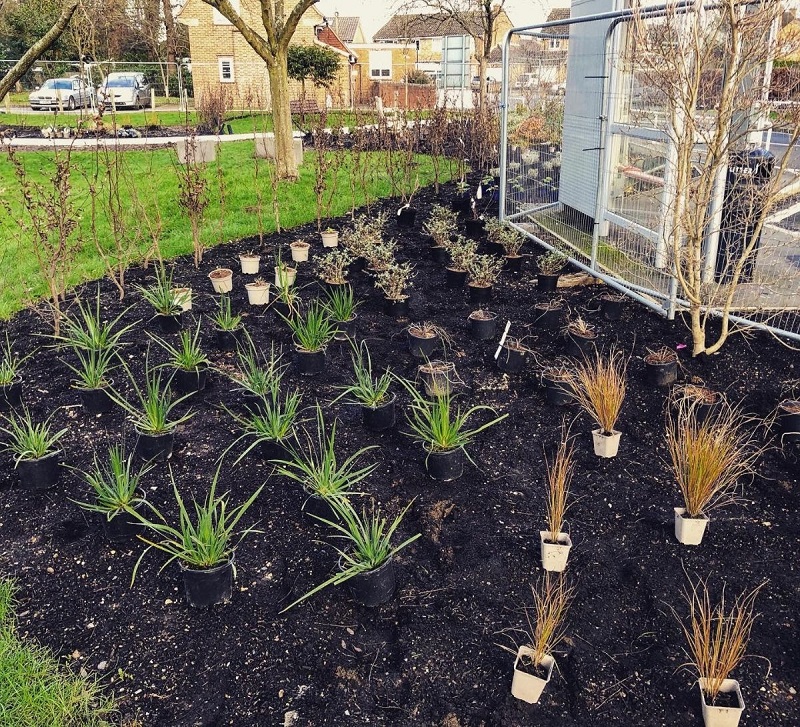Two new healing gardens are nearing completion at Harefield Hospital.
Bowles & Wyer is poised to finish work on the new projects in the grounds of the hospital near Hillingdon in west London.
The work follows the landscaping firm’s completion of a wellbeing garden at nearby St George’s Hospital in Tooting in just a matter of weeks.
In their latest projects, the design team has created two new gardens for the specialist heart and lung hospital.
And, while the hospital carries out major heart and lung transplant operations during normal times; it has, more recently, converted a number of wards to help care for COVID-19 patients.
Design director at Bowles & Wyer, James Smith, said: “The relentless nature of the pandemic has made external spaces an even-more-precious resource, and we very much hope the garden brings some positivity to people in their most difficult of times.”
Harefield Healing Garden, the larger of the two plots, has a free-flowing organic design with a large raised bed feature at its heart where staff, patients and visitors can mingle.
There are also secluded pockets of seating nestled among the planting for those who want more privacy.
Smith said: “Hospital wards can often feel like restrictive and monotonous environments and we wanted to break away from this feeling in the garden by creating a distinct contrast using free-flowing meandering paths and curvaceous geometry.”
While the Healing Garden and the Transplant Garden may be separate spaces, they share similar design features, materials and planting, with the idea of the latter being able to give patients a safe space to spend time in and to see their relatives, as well as encouraging a pathway to rehabilitation.
Patients can take their first steps to recovery in the privacy of the Transplant Garden, a courtyard area outside the high dependency ward, and can then progress to the Healing Garden as they recover.
The designers have ensured the gardens have strong links to biophilic design to create a healthy and productive habitat for humans.
And, by exposing patients to nature on a regular basis, the aim is to improve post-operative recovery times.
“Sensory plants will be important, but the key aim is to incorporate movement into the planting with large swathes of mixed ornamental grasses and flowering perennials, also helping to keep maintenance to a minimum for the hospital,” said Smith.

Sensory plants are a key feature
“A number of ornamental multi-stem trees have been selected to provide sculptural interest and help to provide privacy, as well as seasonal richness.
“And the gardens also incorporate a varied palette of trees and planting to encourage biodiversity.”
The new gardens will be an important resource for staff as well as patients.
Senior staff nurse at the hospital, Rhianna Colyer, said: “For those of us on the frontline in COVID ITU, being able to get outside and spend some time connecting with nature and breathing in fresh air is so important for our wellbeing, after spending 12.5-hour days in bulky facemasks and full PPE.
“Seeing the garden being built over such difficult times has been a real boost and it is so lovely to see the progress the team has made. We can’t wait until it is all finished.”
The final touches of irrigation and lighting are the last steps in the project, before the new gardens can be opened just in time for spring.
